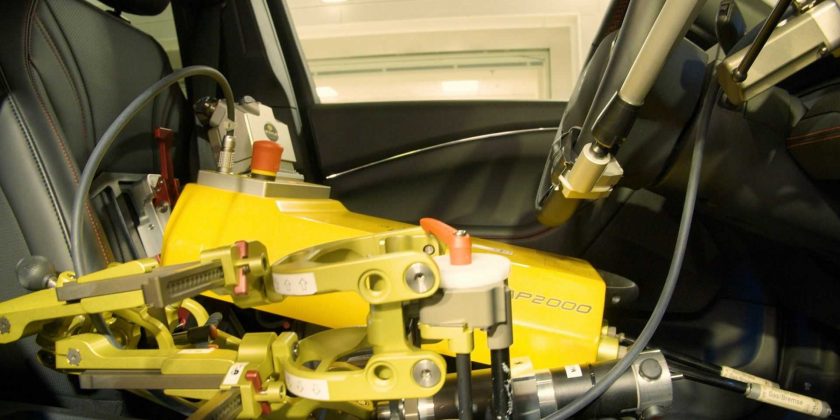Nicknamed Shelby and Miles, these robots are especially used when simulating tedious altitude tests.
Robots are becoming increasingly present in the automotive industry, and not just in the manufacturing phase.
Ford, for example, has turned to robots to test the Mustang Mach-E at its state-of-the-art “Weather Factory” in Cologne, Germany. This facility can simulate various extreme conditions under one roof, such as those found in the Sahara Desert, in Siberia, or atop the tallest Alpine peaks.
As a result, the “Weather Factory” enables engineers to test vehicles in a way that is less impacted by travel limitations than real-world testing.
However, some tests are too much for human test drivers, who may become tired or unwell because of the very realistic simulated conditions—for example when undertaking altitude testing.
Gallery: Ford Robots Testing Mustang Mach-E
Furthermore, wind tunnel testing (particularly at high altitude) requires numerous safety protocols for human drivers, whose health must be constantly monitored. Necessary measures include having oxygen bottles, medical equipment and a paramedic on-site.
To help avoid that, Ford has recruited two robot test drivers, nicknamed Shelby and Miles. They are especially used on altitude tests where a key requirement is for the test to be replicated perfectly multiple times.
Obviously, Ford’s robots have no problem with that. Each one is able to operate at temperatures ranging from -40°C to +80°C (-40°F–176°F) as well as at extreme altitudes. They can also be set up and programmed for different driving styles.
“These two new drivers are fantastic additions to the team, as they can take on the challenging endurance tests at high altitudes and in hot temperatures. Once the robot is in the driver’s seat, we can run tests through the night without ever having to worry that the driver will need a sandwich or a bathroom break.”
Frank Seelig, supervisor, Wind Tunnel Testing, Ford of Europe
The robot test driver’s legs extend to the accelerator, brake and clutch pedals, with one arm positioned to change gear and the other used to start and stop the engine. If that sounds strange, wait until you watch the video that shows the robots at work.
Source:Ford
Source: Read Full Article





